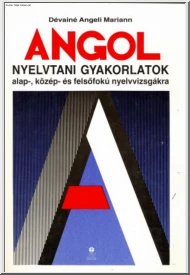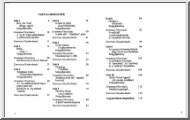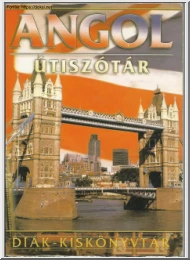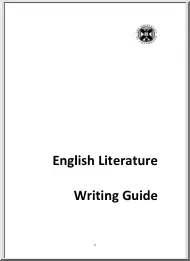A doksi online olvasásához kérlek jelentkezz be!

A doksi online olvasásához kérlek jelentkezz be!
Nincs még értékelés. Legyél Te az első!
Tartalmi kivonat
Europe and Christmas There are 27 countries belonging to the EU. Most of them celebrate Christmas differently In this short projekt we reflect how children can come closer to Greeg and Italian Christmas. Each day contains an opening part which makes the pupils curious to follow the day with the same theme but in another subject. In the middle hours (2nd, 3rd and/or 4th) they learn with games the connections between Greece/Italy and Christmas. At the end of the day is taking place a presentation or a calming down activity. The most important is in these five days, that children learning unconsciously, so they develop themselves without any strict learning methods. Target audience: student teachers, pupils aged 10-11. First day: Monday Subjectes of this day: Geography, History, Technology and Life style, Music, Dance and Drama. 1st Lesson: Geography Aims and Objectives: – To find the 27 EU countries on the map. – To show Greece on the map. – To find the way to get there by
car/train/airplain/boat. – To count out how much time does the travel take to Athene. Resources: – Maps of Europe without the names of the countries. – An inflatable ball or globe. – Ruler, yarn. – Wallchart. – On the bulletin board: characteristics photo's from each country. – Namelists of the countries. Episodes Tasks and expected Productions Modes of Work 10' ° Hang a wallchart of Europe and put characteristics photo's from Individual each country on the bulletin board. Let the children come to the work. wallchart while they say which photo belongs to which country. 15' ° Give every group a printed map. Let them find out how they Group work. called. If a group doesn't know, give them an inflatable ball ° Check together. ° One pupil shows Greece on the wallchart, other one says the Pair work. capital. AND SO ON. 10' ° Each group on their own map have to find the shortest way from Group work. Budapest
to Athene by car/train/airplain/boat, and to count out with the help of their yarn and ruler how much km it is. 5' ° Let a pupil from every group speak up the measures what they Whole class. counted. 10' ° Each group on their own map have to count out how many hours/ Group work. days can take with their own vehicle from Budapest to Athene. 10' ° Trace your family's movement either as a passanger on a boat or Individual work. on a train. Evaluation: to research maps of the same place over time to judge changes. 2nd Lesson: History Aims and Objectives: – To understand the relation between Greeg and Italian people: to point on their traditional habits. – To think about how Greeg and Italian people celebrate their Christmas in the ancient time. – To find connection between the legend of Europe and Christmas. Resources: – Ovid, Metamorphoses. Book II: 844-875 – Usborne Picture Dictionary. – Printed puzzle. Episodes 10' Tasks
and expected Productions ° Read up the Europe Legend. Modes of Work Whole class listen. ° Let the children collect the names. 15' ° Pupils write those names into their puzzles. Individual work. - The father of Europe: AGENOR. - She was stolen by a bull: EUROPE. - The Phoenician princess lived in this country: LEBANON. - The Phoenician princess lived in this city: TYRE. - Minos was the king of these people: MINOANS. - Zeus and Europe's son, who become a king: MINOS. - Europe's lover: ZEUS. 25' ° Talking time: questions must be answered. Like: „What Whole class work. can speak do you think.” Children - .where is Lebanon? between them, too. - .which traditional habit come from there? - .how do they called the day of 24th December? - Why do you think that? 10' ° Somebody tells what Greeg/Italian people eat at Individual Christmas. presentation. Evaluation: quality of listening; curiosity, imagination and creativity in speech. 3rd Lesson:
Technology and Life style Aims and Objectives: – Searching in different magazines how to make an original Greeg/Italian Christmas candy. Resources: 1 cup sugar, ¼ cup light corn syrup, ¼ cup water, 1/8 tsp. cream or tartar, 4 drops oil or peppermint or other flavoring, 4 drops red or green food coloring; thermometer, refrigerator, roller, scissors. Episodes Tasks and expected Productions Modes of Work ° Children get a piece of paper where they can read how to 60' make Candy Cane. Group work. ° The teacher asks the groups one after another how much sugar, water, syrup, .do they need ° While the groups are working, the teacher help them. Evaluation: the pupils offer their candies each other and they share their experiments. 4th Lesson: Music Aims and Objectives: – To feel the Greek atmosphere in the class the pupils listen a Christmas carol, which can be heard many times in Greece, too. – To sing the carol by heart and learn it by ear, at least one verse.
Resources: – Printed copy of the carol's text. – CD player – CD. Episodes 5' Tasks and expected Productions ° Display the Greek Christmas Carol. Modes of Work Whole class listen ° Teacher asks: Teacher inquires. - Are you excited? - What did you feel? - What kind of music was this? - Who knows the title of the song? 5' 10' ° The teacher sing it up. Teacher ° Today we start to sing it. presentation. ° Keep your beat steady: - Firstly hum the rhythm, } 1, 2, Very good! Whole class. - then clap afterwards. 20' ° Pupils echo the carol: The whole class Good evening, noblemen If this is your will, 20' AND SO ON. replay. ° Students try to sing the carol alone, if it is not succeed, the teacher help with a note. Evaluation: by hearing the rhythm the children can read nicer the text of the carol, or any other ones. 5th Lesson: Dance and Drama Aims and Objectives: to show Greek music with its traditional music. It is legs-on
use demonstration of musical material culture representing early Christian Greece. This program teaches critical thinking, listening and comparing/contrasting skills. Resources: CD player and CD: Zorba, by Mikis Theodorakis. Episodes 10' Tasks and expected Productions ° Count Shoulder for hold, Basic: 7 arms beats per stretched Modes of Work pattern. straight. One long line; leader is on the R end of the line. 10' ° Two to four dancers in a group; leader is on the R end of the line. Leader calls the variations and sets the mood and tempo. ° Weight on R foot. Q,Q,S:Left, tap, lift: Step forward on L foot (weight on L), tap R foot by L heel, lift R leg up with bent knee. 10' Group work. °S,S: Behind, behind: Step back on R foot, step back on L foot (weight on L); R leg drifts in front of L, knee bent. °Q,Q,S: Right, left, right: Step forward & slightly to the right on R foot, step forward on L foot, step back on R foot (weight on R).
10' °S: Brush: Brush L foot by swinging L leg into air as if kicking a rock. 20' --- Repeat. Evaluation: These instructions assume familiarity with other varations specified
car/train/airplain/boat. – To count out how much time does the travel take to Athene. Resources: – Maps of Europe without the names of the countries. – An inflatable ball or globe. – Ruler, yarn. – Wallchart. – On the bulletin board: characteristics photo's from each country. – Namelists of the countries. Episodes Tasks and expected Productions Modes of Work 10' ° Hang a wallchart of Europe and put characteristics photo's from Individual each country on the bulletin board. Let the children come to the work. wallchart while they say which photo belongs to which country. 15' ° Give every group a printed map. Let them find out how they Group work. called. If a group doesn't know, give them an inflatable ball ° Check together. ° One pupil shows Greece on the wallchart, other one says the Pair work. capital. AND SO ON. 10' ° Each group on their own map have to find the shortest way from Group work. Budapest
to Athene by car/train/airplain/boat, and to count out with the help of their yarn and ruler how much km it is. 5' ° Let a pupil from every group speak up the measures what they Whole class. counted. 10' ° Each group on their own map have to count out how many hours/ Group work. days can take with their own vehicle from Budapest to Athene. 10' ° Trace your family's movement either as a passanger on a boat or Individual work. on a train. Evaluation: to research maps of the same place over time to judge changes. 2nd Lesson: History Aims and Objectives: – To understand the relation between Greeg and Italian people: to point on their traditional habits. – To think about how Greeg and Italian people celebrate their Christmas in the ancient time. – To find connection between the legend of Europe and Christmas. Resources: – Ovid, Metamorphoses. Book II: 844-875 – Usborne Picture Dictionary. – Printed puzzle. Episodes 10' Tasks
and expected Productions ° Read up the Europe Legend. Modes of Work Whole class listen. ° Let the children collect the names. 15' ° Pupils write those names into their puzzles. Individual work. - The father of Europe: AGENOR. - She was stolen by a bull: EUROPE. - The Phoenician princess lived in this country: LEBANON. - The Phoenician princess lived in this city: TYRE. - Minos was the king of these people: MINOANS. - Zeus and Europe's son, who become a king: MINOS. - Europe's lover: ZEUS. 25' ° Talking time: questions must be answered. Like: „What Whole class work. can speak do you think.” Children - .where is Lebanon? between them, too. - .which traditional habit come from there? - .how do they called the day of 24th December? - Why do you think that? 10' ° Somebody tells what Greeg/Italian people eat at Individual Christmas. presentation. Evaluation: quality of listening; curiosity, imagination and creativity in speech. 3rd Lesson:
Technology and Life style Aims and Objectives: – Searching in different magazines how to make an original Greeg/Italian Christmas candy. Resources: 1 cup sugar, ¼ cup light corn syrup, ¼ cup water, 1/8 tsp. cream or tartar, 4 drops oil or peppermint or other flavoring, 4 drops red or green food coloring; thermometer, refrigerator, roller, scissors. Episodes Tasks and expected Productions Modes of Work ° Children get a piece of paper where they can read how to 60' make Candy Cane. Group work. ° The teacher asks the groups one after another how much sugar, water, syrup, .do they need ° While the groups are working, the teacher help them. Evaluation: the pupils offer their candies each other and they share their experiments. 4th Lesson: Music Aims and Objectives: – To feel the Greek atmosphere in the class the pupils listen a Christmas carol, which can be heard many times in Greece, too. – To sing the carol by heart and learn it by ear, at least one verse.
Resources: – Printed copy of the carol's text. – CD player – CD. Episodes 5' Tasks and expected Productions ° Display the Greek Christmas Carol. Modes of Work Whole class listen ° Teacher asks: Teacher inquires. - Are you excited? - What did you feel? - What kind of music was this? - Who knows the title of the song? 5' 10' ° The teacher sing it up. Teacher ° Today we start to sing it. presentation. ° Keep your beat steady: - Firstly hum the rhythm, } 1, 2, Very good! Whole class. - then clap afterwards. 20' ° Pupils echo the carol: The whole class Good evening, noblemen If this is your will, 20' AND SO ON. replay. ° Students try to sing the carol alone, if it is not succeed, the teacher help with a note. Evaluation: by hearing the rhythm the children can read nicer the text of the carol, or any other ones. 5th Lesson: Dance and Drama Aims and Objectives: to show Greek music with its traditional music. It is legs-on
use demonstration of musical material culture representing early Christian Greece. This program teaches critical thinking, listening and comparing/contrasting skills. Resources: CD player and CD: Zorba, by Mikis Theodorakis. Episodes 10' Tasks and expected Productions ° Count Shoulder for hold, Basic: 7 arms beats per stretched Modes of Work pattern. straight. One long line; leader is on the R end of the line. 10' ° Two to four dancers in a group; leader is on the R end of the line. Leader calls the variations and sets the mood and tempo. ° Weight on R foot. Q,Q,S:Left, tap, lift: Step forward on L foot (weight on L), tap R foot by L heel, lift R leg up with bent knee. 10' Group work. °S,S: Behind, behind: Step back on R foot, step back on L foot (weight on L); R leg drifts in front of L, knee bent. °Q,Q,S: Right, left, right: Step forward & slightly to the right on R foot, step forward on L foot, step back on R foot (weight on R).
10' °S: Brush: Brush L foot by swinging L leg into air as if kicking a rock. 20' --- Repeat. Evaluation: These instructions assume familiarity with other varations specified



